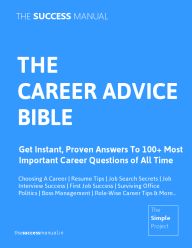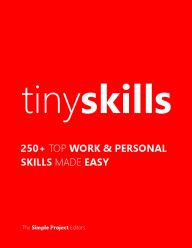On February 16, 2025 By thesuccessmanual Topic: Remarkable, Book summary, Quotes, Mba
This guide belongs to 100 Ways To Be Being Remarkable Series, a special project that brings you business and self-development advice from The Success Manual.
Guy Kawasaki is one of the original Apple Computer employees responsible for marketing of the Macintosh in 1984. He is a Silicon Valley venture capitalist. Guy is known for bringing the idea of evangelism to the information technology business In his book, Selling the Dream, Guy illustrates using evangelism to other areas than business. Guy has founded two web projects, Truemors.com and Alltop.com
You will also find Guy's quotes liberally used through The Success Manual, in its online as well as offline (e-book) version.
#10: Live off your parents as long as possible.
#9 Pursue joy, not happiness.
#8: Challenge the known and embrace the unknown.
#7: Learn to speak a foreign language, play a musical instrument, and play non-contact sports.
#6: Continue to learn.
#5: Learn to like yourself or change yourself until you can like yourself.
#4: Don't get married too soon.
#3: Play to win and win to play.
#2: Obey the absolutes.
#1: Enjoy your family and friends before they are gone.
- Palo Alto High School Baccalaureate Speech 6/11/95
Guy’s rules:
First, always say ‘please’ and ‘thank you.’
Second, never discriminate because of race, gender, creed, or color.
Third, noblesse oblige: the higher you go, the kinder you must be.
Fourth, never take any crap from anyone.
Evangelism is about selling a dream.
- From his book "Selling the dream". I suggest you should get this book just to take a alook at the original Product Introduction Plan for Apple.
"Generate royalties." "Catalyze change." "Enable butt kicking." "Get going." Pick one!
- When asked about the Mantra of his book
The presentation rule
The key is the 10/20/30 rule: 10 slides given in 20 minutes using no font smaller than 30 points.
Don't worry, be crappy.
Revolutionary means you ship and then test... Lots of things made the first Mac in 1984 a piece of crap - but it was a revolutionary piece of crap.
By the time (the Leaning Tower of Pisa) was 10% built, everyone knew it would be a total disaster. But the investment was so big they felt compelled to go on. Since its completion, it cost a fortune to maintain and is still in danger of collapsing. There are no plans to replace it, since it was never needed in the first place. I expect every installation has its own pet software which is analogous to the above.
Think “book” not “diary.
- On blogging
SUMMARY OF THE ART OF START
The Art of The Start: The Time-Tested, Battle-Hardened Guide for Anyone Starting Anything is one of most notable books on entrepreneurship written by Guy Kawasaki.
There are five important things an entrepreneur must accomplish:
1. Make meaning. The best reason to start an organization is to make meaning—to create a product or service that makes the world a better place. So your first task is to decide how you can make meaning.
2. Make Mantra. Forget mission statements; they’re long, boring, and irrelevant. No one can ever remember them—much less implement them. Instead, take your meaning and make a mantra out of it. This will set your entire team on the right course.
3. Get Going. Start creating and delivering your product or service. Think soldering irons, compilers, hammers, saws, and AutoCAD—whatever tools you use to build products and services. Don’t focus on pitching, writing, and planning.
4. Define your business model. No matter what kind of organization you’re starting, you have to figure out a way to make money. The greatest idea, technology, product, or service is short-lived without a sustainable business model.
5. Weave a MAT(Milestones, Assumptions, And Tasks). The final step is to compile three lists: (a) major milestones you need to meet; (b) assumptions that are built into your business model; and (c) tasks you need to accomplish to create an organization. This will enforce discipline and keep your organization on track when all hell breaks loose—and all hell will break loose.
- For partnerships, find an internal champion who can keep the partnership alive, don't use a committee. <<< Very crucial in any endeavor.
- Learn the art of schmoozing: circulate, ask good questions and listen, follow up, make it easy to get in touch, be passionate, read voraciously, give favors, return favors, ask for favors in return. It's a give and take.
- Branding: simplify, simplify, simplify the product.
- Recruit evangelists: ask, look for believers, let them bloom, assign tasks and expect them to get done, nurture and support, give them tools.
- Make sure everyone (in the company) can talk the walk.
Most common words in Mission statements
- Best …………………………94
- Communities ……………97
- Customers ………………211
- Excellence …………………77
- Leader ……………………106
- Quality ……………………169
- ‘The Mission Statement Book’, by Jeffrey Abrams, which provides 301 examples of mission statements,
Good Mantra
Authentic athletic performance (Nike).
Fun family entertainment (Disney).
Rewarding everyday moments (Starbucks).
Think (IBM).
Winning is everything (Vince Lombardi)
Four principles of getting going:
1. Think Big
2. Find a few soul mates
3. Polarize people
4. Design different
Some different and valid approaches
A.“I WANT ONE.” This is the best kind of market research.
B.“MY EMPLOYER COULDN ’T (OR WOULDN ’T)DO IT.”
C.“WHAT THE HELL —IT ’S POSSIBLE!”
D.“THERE MUST BE A BETTER WAY.”
5. Use prototypes as market research.
Tips to help you develop your business model:
1. Be specific
2. Keep it simple
3. Copy somebody
4. Ask Women
Seven milestones every startup must focus on:
1 Prove your concept.
2 Complete design specifications.
3 Finish a prototype.
4 Raise capital.
5 Ship a testable version to customers.
6 Ship the .final version to customers.
7 Achieve break-even.
List of the major assumptions that you are making about the business:
These include factors such as:
- product or service performance metrics
- market size
- gross margin
- sales calls per salesperson
- conversion rate of prospects to customers
- length of sales cycle
- return on investment for the customer
- technical support calls per unit shipped
- payment cycle for receivables and payables
- compensation requirements
- prices of parts and supplies
- customer return on investment
List of major tasks that are necessary to design, manufacture, sell, ship, and support your product or service.
- Renting office space
- Finding key vendors
- Setting up accounting and payroll systems
- Filing legal documents
- purchasing insurance policies
Startup To Dos
Positioning Finding a niche and dominating it
Pitching Ten slides, twenty minutes, and thirty- point font
Writing a business plan Twenty pages of wishful thinking
Bootstrapping Staying with a college buddy instead of a Motel
Recruiting Sucking in people who “get it ” and are willing to risk their careers for stock options
Partnering Finding a way to increase sales by piggybacking on others
Branding Evangelizing in the trenches
Rainmaking Sucking up, down, and across for sales reps
Being a mensch Helping people who can’t help you
Also Read The Best of Seth Godin
Peter Drucker's Rules of Management
If you liked this article, please bookmark it on Delicious or share on Twitter. Thanks, friends. Follow us on Twitter.
We don't recommend any other guide than our very own The Success Manual - Encyclopedia of advice to 130 most important skills.

